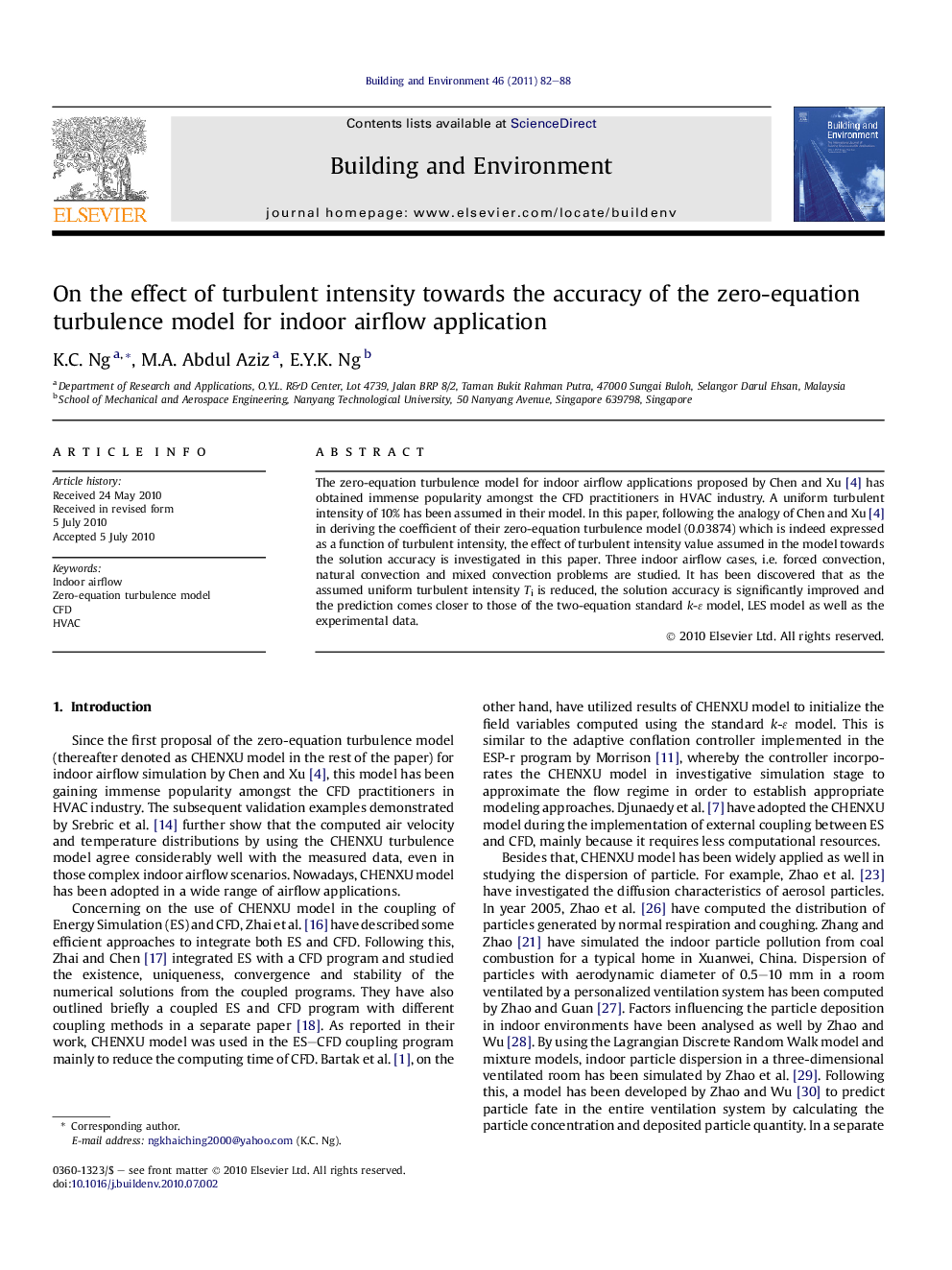| Article ID | Journal | Published Year | Pages | File Type |
|---|---|---|---|---|
| 248891 | Building and Environment | 2011 | 7 Pages |
The zero-equation turbulence model for indoor airflow applications proposed by Chen and Xu [4] has obtained immense popularity amongst the CFD practitioners in HVAC industry. A uniform turbulent intensity of 10% has been assumed in their model. In this paper, following the analogy of Chen and Xu [4] in deriving the coefficient of their zero-equation turbulence model (0.03874) which is indeed expressed as a function of turbulent intensity, the effect of turbulent intensity value assumed in the model towards the solution accuracy is investigated in this paper. Three indoor airflow cases, i.e. forced convection, natural convection and mixed convection problems are studied. It has been discovered that as the assumed uniform turbulent intensity Ti is reduced, the solution accuracy is significantly improved and the prediction comes closer to those of the two-equation standard k-ɛ model, LES model as well as the experimental data.
